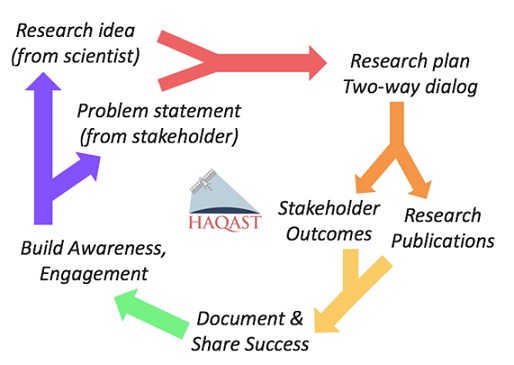ARL Weekly News – July 12, 2019
ATDD
Temple Lee, Michael Buban, and Ed Dumas participated in the first intensive observation period of the Chequamegon Heterogeneous Ecosystem Energy-balance Study Enabled by a High-density Extensive Array of Detectors 2019 (CHEESEHEAD19) campaign from 8-12 July. The aim of CHEESEHEAD is to address the role of boundary-layer responses to land surface changes and involves collaborators from the University of Wisconsin and National Center for Atmospheric Research (NCAR). During the campaign, Temple, Michael, and Ed, along with Nicole Chappelle from the NOAA Aircraft Operations Center (AOC), performed over 30 flights with the DJI S-1000 and Meteomatics small unmanned aircraft systems (sUAS). The DJI flights were used to measure land surface temperature to derive heat flux over a ~ 400 x 400 meter area surrounding one of the 30-m flux towers installed by collaborators from NCAR, whereas the Meteomatics flights were used to obtain temperature, moisture, and wind profiles.
World Meteorological Organization (WMO) workshop on the use of Unmanned Aerial Vehicles for Operational Meteorology: Dr. Bruce Baker gave an invited talk at the WMO workshop on July 2, 2019 in Toulouse, France. The workshop was hosted by Meteo-France and the WMO Inter-Programme Expert Team on Aircraft Observations. The goals were to develop consensus and the potential benefits to data users, application areas, and aviation.
Dr. Rick Saylor is tentatively scheduled to present remotely during the International Cooperative for Aerosol Prediction’s (ICAP) 11th working group meeting in Tsukuba, Japan. Dr. Saylor will update the ICAP community on the developmental progress of NOAA’s new FV3-based global aerosol model on 21 July. He is collaborating with colleagues in NOAA’s National Centers for Environmental Prediction, Global Systems Division, and Chemical Sciences Division.
ASMD
Dr. Patrick Campbell presented at the biannual NASA Health and Air Quality Applied Sciences Team (HAQAST) meeting in Pasadena, CA, during July 10-12. The public meeting focused on presentations and engagement from different academic, government, state, and public stakeholder groups on air quality and health relevant applications of satellite data (HAQAST mission pictured below; see https://haqast.org for more information). Dr. Campbell presented on ARL’s latest “Updates of Satellite Applications in National Air Quality Forecasting,” as well as the Year 3 HAQAST progress report for Dr. Daniel Tong, a Principal Investigator of HAQAST. This included ARL advancements in volcanic sulfur dioxide forecasting, fire emissions modeling, and satellite-aided dust forecasting. Also discussed were potential collaborations to combine a suite of satellite-based ammonia observations with future ARL emissions and air quality forecasting developments. Stay tuned for the next call for HAQAST proposals in 2020! 
Credit: HAQAST

